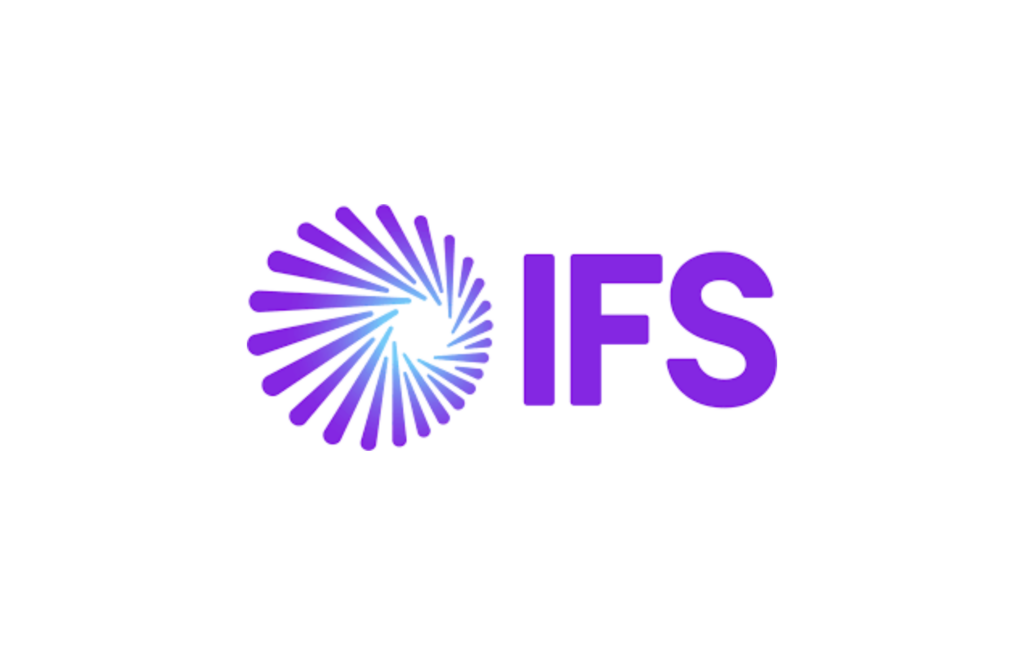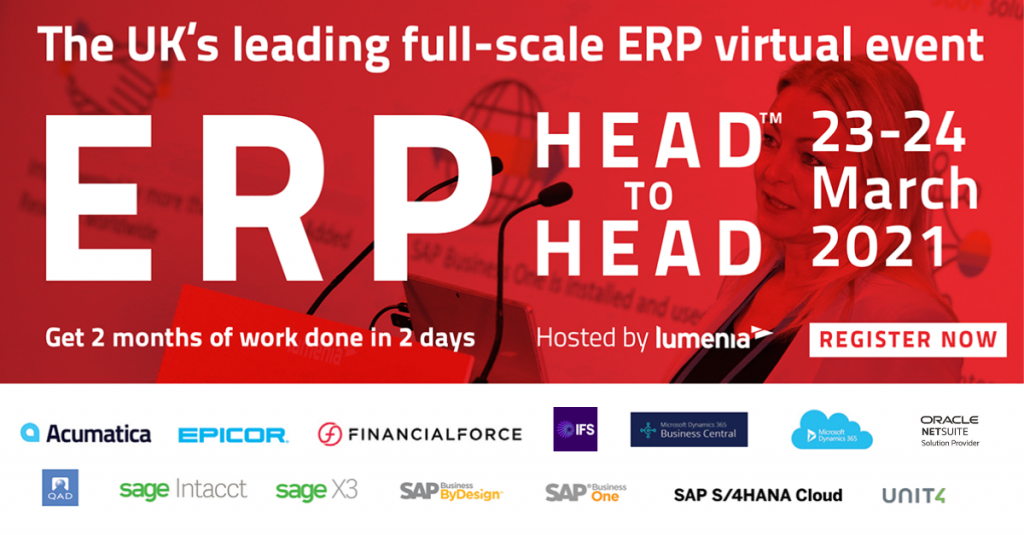I wrote to each of the ERP vendors and asked them to send me a few words on what set them apart from the competition – the results were depressingly vague. I hate to break it to you but ‘putting customers first’, ‘deep industry knowledge’, and ‘intelligence’ are not differentiations. That’s just table stakes. If your vendor is peddling these superficial concepts as ground-breaking and relevant capabilities then you should consider talking to another vendor.
If you want an example of true differentiation take a look at Acumatica – a small ERP vendor from the US that has just launched a bold plan to bring its products and services to the UK. Consumption-based licensing that flexes as usage goes up or down; a unique Bill of Rights (until it was copied recently by Infor) which sets out clear commitments to customers – even if they want to leave; a channel-only strategy which means it is 100 percent focussed on products and customers and doesn’t have to support a sales team – these are three clear contrasts to the competition and what I would call true differentiators.
The idea of differentiation has taken hold swiftly – and for good reason. Product suites have matured and there are only so many ways you can build an accounts payable app or develop a widget to support invoice reconciliation. The offerings have largely caught up with each other and every ERP vendor has a set of applications that perform most, if not all, of the tasks an enterprise requires. There was a time when Oracle could boast of the most sophisticated finance functions, or Workday could claim dominance in the HCM space – but today, after the vendors have had a decade or more to refine their products, there isn’t much between any of them at face value.
Of course, the functionality of an app or a module in isolation doesn’t equate to a fully functional ERP solution. Just because the individual modules have become comparable that doesn’t mean that all solutions are equal, they aren’t. An application sits inside a suite (usually) which is built on a technology stack or platform, which is hosted on an infrastructure layer. Within the platform there will be extensibility to connect to other systems and sophisticated tools that use emerging technologies to manage, manipulate and analyse data. If you get all your ducks in a row the simple click (or automated action) that passes an invoice, records a sale, or places an order, miraculously feeds into a data repository of some sort and then the wizardry of artificial intelligence and machine learning, impelled by the power of the cloud, produces meaningful insights that give the enterprise an edge.
That fundamental end-to-end process is what all ERP products do (or should do) and claiming that there is something inherently intelligent or anomalous about it does a disservice to the enterprises that are queued up to buy the next generation of business software. Frankly, if your flagship ERP product doesn’t provide that sort of seamless performance – and more – it shouldn’t be on the market.
I hate to break it to you but ‘putting customers first’, ‘deep industry knowledge’, and ‘intelligence’ are not differentiations. That’s just table stakes.
The vendors already know this. Marketing of the past focussed on functionality where one could claim superiority over another – and demonstrate it. Today, however, the functional gulf between most of the vendors is closer than two coats of paint. As this realisation set in, vendors sought new ways to abstract themselves from their competitors. Industry specialisation and last mile functionality became the battleground but even that is a stretch to describe as a true differentiation. Surely, if you are a retailer you should expect the solution being pitched to you has been fine-tuned to work for retail. If you are a manufacturer it should go without saying that any ERP being presented can manage orders, inventory, and distribution, right out of the box. Being suitable doesn’t equal being different and, as I said at the start, there are only so many ways you can place an order, raise an invoice or pay something.
Of course, if you drill down into verticals even deeper, some of the ERP products do start to offer up some unique qualities. Rather than a solution that is built for the food and beverage industry, you may find offerings that include specific functionality for butchers, bakers and even candlestick makers. Vendors that have a cohort of customers in a particular vertical market are able to compare data, share ideas and refine products to deliver tailored best-practice and standardised processes. And of course, when one aviation company sees a competitor implement IFS successfully, it is more likely that another similar organisation will follow suit because of the referenceability. But, I still don’t consider that to be the ultimate definition of what differentiation is meant to be – or certainly what it’s sold as.
ERP vendors have to be smarter about separating themselves from the competition, focus on where ERP is heading, and figure out how to get ahead of the curve. ERP applications will ultimately become touchless solutions that are embedded into a seamlessly automated IT landscape. Users will barely know they exist and their only interactions with them will be to set some rules at the outset or give voice commands when they want a report. In a world where ERP applications become as invisible as that they will develop into commoditised purchases and it won’t matter whether you are running Epicor, Workday or QAD – they will just be there to do a job – largely through hyperautomation and RPA.
Business software must become as intuitive, automated and unobtrusive as consumer applications; intuitive through the integration of machine learning to create smarter processes; automated with RPA to reduce clicks and repetitive tasks; and unobtrusive in such a way that they are virtually touchless. When a vendor can demonstrate this kind of faceless, touchless, and perceptive solution, coupled with embedded industry standardisation and the boundless compute power of the public cloud, they will have finally realised an ambition that began more than two centuries ago when the first punch card looms were invented.
While we wait for Nirvana, how do you separate the vendors?
It is interesting to listen to a vendor selling their points of difference and realising that you only spoke to a different vendor half an hour ago that was selling the same story and claiming the same uniqueness. Even the arguments about being ‘born in the cloud’ are beginning to sound a little hollow. Perhaps ten years ago there was some clear demarcation between vendors that had designed their application for the cloud and those that had retooled legacy technology and shoehorned it into a SaaS product. But today, even those that were late to the party have got their apps on a single line of code and operating as genuine cloud tools – or at least most of them have.
If we think about the main ERP vendors, they each have a natural hunting ground and an anchor which they have built their business on – that in some ways does separate them a little. But how much of it is real differentiation?
Oracle is rooted in finance; Workday in HCM; Unit4 in people; IFS in service; Infor in micro-verticals; SAP in the intelligent enterprise. They all have something that they claim is their USP and it would be unfair to completely discount it as having no merit. I wrote previously that certain vendors play better with certain verticals or horizontal functions and that is still true today. For example, despite the closing gap between each provider, I won’t be holding my breath for Unit4 to announce they have won a major Oil & Gas contract or that QAD are getting into banking.
Specialisms do play a role and working with a contingent of similar businesses and learning from those experiences allows vendors to develop new thinking, products and services tailored to a particular industry. Developing their internal resources to include domain experts further enhances their capabilities in specific areas – but again, who isn’t doing this? Which vendor doesn’t have a manufacturing expert or a retail guru?
ERP vendors have to be smarter about separating themselves from the competition, focus on where ERP is heading, and figure out how to get ahead of the curve.
Increasingly, it will be a vendor’s ability to provide (either directly or through closely coupled strategic partners) an integrated end-to-end solution that wins the most business. Enterprises, and small businesses alike, will be much more discerning with the technology purchases in the future and holes in a solution or awkwardly integrated technology will be unacceptable. COVID-19 may be the catalyst that pushes many slower organisations towards transformation, and in the rush to embrace digital technology, some less than optimal solutions may still slip through the net. But once businesses have satisfied the short term requirement to introduce technology that helps them through the crisis, I expect that there will be a big reality check and only those vendors which can offer a seamless, future proof, and touchless solution will prosper.
With this in mind let’s take a cursory look at what sets the main vendors apart today:
Workday
Workday’s big strategic advantage comes via its ability to deliver an offering through ‘the power of one’. Workday was designed from scratch for the cloud and its solutions combine one source of data, one security model, and one experience. It has bet big on the emerging technologies and is a leader when it comes to integrating artificial intelligence and machine learning into the fabric of its solutions. More than 45 million Workday users collectively help it to become more intelligent and the very largest of enterprises have found Workday a perfect companion for its HCM needs. Its financials offering is less mature but it is also proving popular with big enterprises that, for whatever reason, have decided that neither Oracle nor SAP cut the mustard. Workday believes that its financials business will outgrow its HCM business over the next five years – a bold ambition given its late arrival to the party.
Workday is a publicly traded company.
Unit4
Unit4’s key advantages are its flexible platform and its ability to work for businesses that are people-centric, specifically professional services, non-profits, education and public sector. Unit4’s platform is a highly flexible microservices based set-up with an exceptionally good cloud-based extension kit delivering out of the box, multi-tenant industry solutions that are extensible with configuration, not customisation, to a broader set of applications. Its voice-controlled digital assistant, Wanda, may not be the only offering of its type but it is a significant step ahead of its competition and a key move towards the touchless applications that enterprises will crave. Its recently launched next-generation ERP solution called ERPx delivers a fully integrated ERP, HCM and FP&A, on a unified architecture, with rapid deployment and industry-specific innovations out-of-the-box. Significant improvements to the user journey have been made which are under-pinned by smart automation to provide users with recommendations for actions to complete manual tasks, like populating timesheets, via a touchless experience. Unit4’s strengths lie in its platform but despite a big brand refresh it still lags behind many of its competitors in terms of brand strength.
Unit4 is privately owned by venture capital company Advent.
Infor
Infor’s big play is focussed on micro-verticals and it has developed hundreds of niche solutions that are finely tuned for particular sectors of commerce. It has taken Infor almost a decade to refine these offerings but they are finally getting some traction and the last-mile functionality that comes out of the box is a clear shift from the norm. The latest breed of Cloud Suites represents the culmination of nearly $5bn in R&D investment that the vendor has ploughed into its products. Its new ownership structure sets Infor apart from every other ERP vendor and allows it to make long term decisions based on the value of a customer over its entire lifecycle rather than looking for quick gains. You can read more on Infor elsewhere in this issue of ERP Today.
Infor is the only major vendor that is privately owned and not private equity-backed.
IFS
IFS is on the precipice of a major step-forward with its latest release of IFS applications set for December 2020 (more on this in the next issue of ERP Today). Its customer base is made up of organisations that are often asset-heavy and rely on service as a key tenet of their operations. It works with aerospace and defence organisations, energy producers, distributors and manufacturers with a key focus on asset and service management underscored by its ERP applications. In terms of revenues IFS is a mid-tier vendor but its aspirations are significantly loftier than that and it is increasingly winning business away from the larger software vendors and making some inroads into the territory historically dominated by SAP and Oracle. IFS is an innovative thinker and considerable effort has been put into positioning its brand as a ‘challenger’ to the norm – and by the norm they mean Oracle and SAP. Their starting point is ‘why would an organisation buy our solutions in the first place?’ and they have built an offering around the notion that helping customers themselves become more customer-centric gives an enterprise running IFS applications a clear advantage over the competition. You can read more about IFS in our cover story in the next issue.
IFS is private owned by venture capital company EQT.
SAP
SAP is the world’s biggest business software company and its strategy is built around the concept of ‘the intelligent enterprise’. There has been continual debate about the SAP strategy by media commentators and analysts and significant disquiet amongst customers over its roadmap. Its flagship ERP product, S/4HANA, has taken a long time to gain traction (largely due to the complexities of moving from an older SAP system to the newer one) but, developments in the partner eco-system have started to build capabilities that ameliorate some of the migration pain. However, the notion of the intelligent enterprise falls a bit flat as far as I am concerned and it’s hard to see how something so generic can be described as, or considered as, a real differentiator. Now that the dust has settled following the departure of two CEOs in relatively quick time, it will be interesting to see if sole-CEO, Christian Klein, can articulate the longer term strategy more coherently – at the moment it’s hard to tell if SAP is an experience management business, an ERP vendor, or an eco-warrior.
SAP is a publicly traded company.
Oracle
Oracle is a one-stop shop for all of your enterprise technology needs. Other than Microsoft, it is the only vendor that can deliver a fully integrated solution from application to infrastructure and its autonomous database (for which they are now a growing number of reference points) is a significant differentiator from all other vendors. Oracle’s ability to provide everything that an enterprise needs from click to cloud is seen by some as a major advantage. Others argue that a lack of specific industry functionality is a limitation and having ‘all your eggs in one basket’ is not the optimal arrangement. As IT landscapes become more complex and data insights from multiple systems are required to talk to each other, Oracle’s single solution approach is appealing. The ‘hairball’ architecture that Juergen Lindner talks about elsewhere in this issue of ERP Today is an increasingly onerous task for many enterprises to manage. Simplifying your IT landscape is a solution that many large enterprises favour – but it’s not for everyone, not least because Oracle, after all, is Oracle and many customers still find Big Red just that bit too bullish. Oracle is a publicly traded company.




